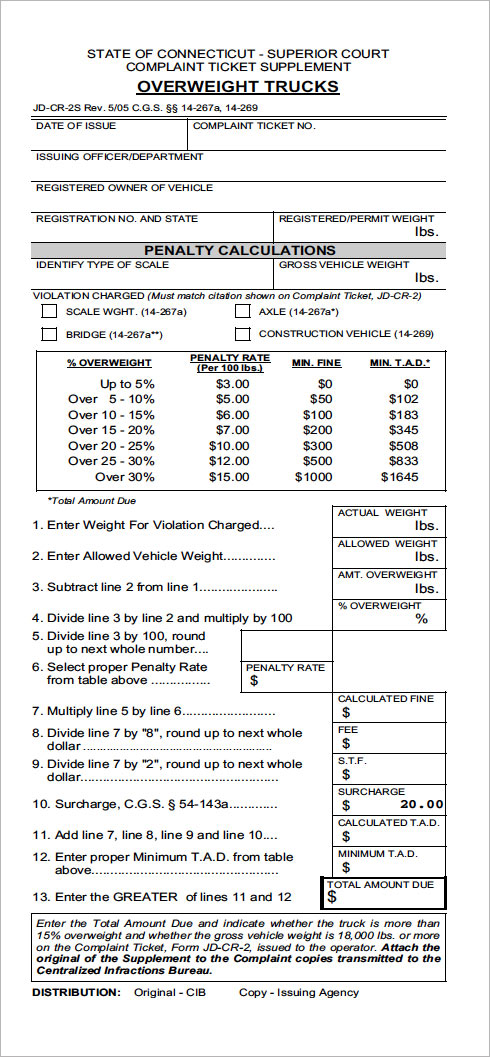Understanding Overweight Violations
From time to time, the question comes up regarding how the State of Connecticut considers fines for overweight vehicles. The information provided below is an overview on how the monetary value of the fine is determined. When a vehicle in Connecticut exceeds its Gross Vehicle Weight Rating or its weight exceeds the registered weight, the…

From time to time, the question comes up regarding how the State of Connecticut considers fines for overweight vehicles. The information provided below is an overview on how the monetary value of the fine is determined.
When a vehicle in Connecticut exceeds its Gross Vehicle Weight Rating or its weight exceeds the registered weight, the overweight (in pounds) is calculated as a percentage value over the allowable weight. Once the percentage is determined, enforcement officials compute a fine based on a sliding scale of $3 to $15 per each 100 pounds overweight. The fine is based on how great the percentage overweight is determines what dollar value per each 100 pounds will be used.
The calculated fine for each 100 pounds overweight is only part of the fine assessment. There are additional costs added to the fine, including a straight fee, a surcharge, and a S.T.F. charge. These add-ons can greatly increase the amount of the fine.
The easiest way to understand overweight fines is to review the worksheet published by the Connecticut Superior Court and distributed to law enforcement officers. Follow the 13 steps listed below, to calculate an overweight violation.
Overweight Violations Penalty Rates and Fine Calculation
This information published on Aug. 1, 2015 and subject to change. Review the Connecticut Mail-in Violations and Infraction Schedule publication [PDF] for current information. The following screen shot was taken from page 52, appendices E, F and G. You can also click here to see the page.

